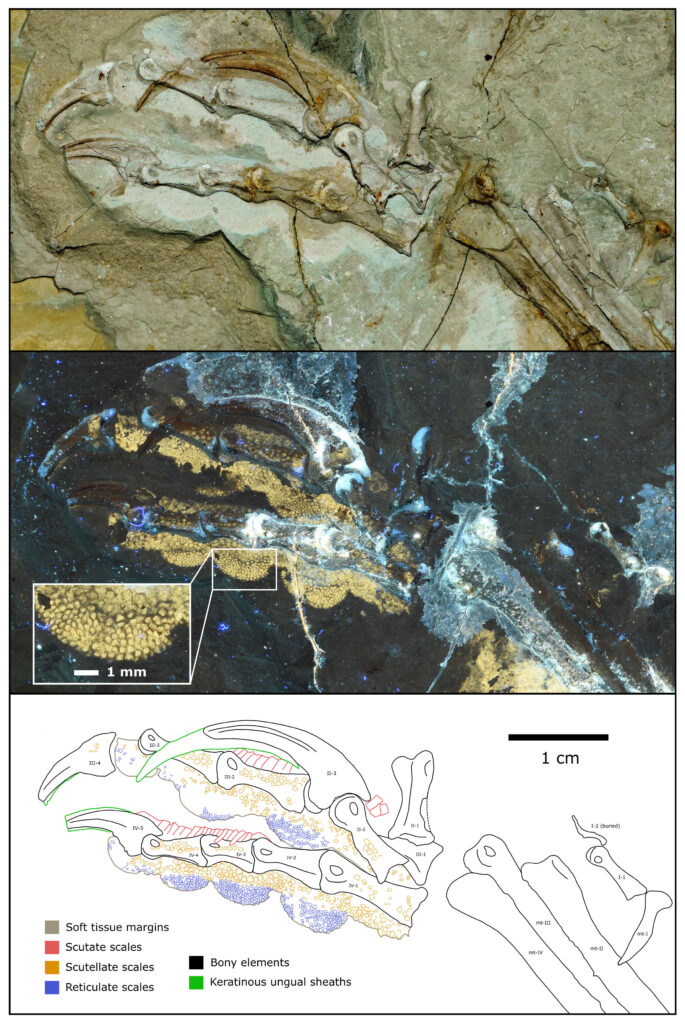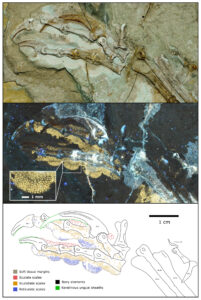CUHK
News Centre
CUHK palaeontologist uses evidence from feet to reveal Microraptor had a hawk-like lifestyle
Scientists from The Chinese University of Hong Kong (CUHK) and around the world have refined their understanding of the lifestyles of early birds and their closest flying relatives by comparing their toe pads, foot scales, claws and joints with living birds. It was found that Microraptor, an Early Cretaceous flying relative of birds had a specialised lifestyle similar to living hawks. The findings were published in prestigious international scientific journal Nature Communications (NCOMMS).
In living birds, foot shape varies greatly because it relates to diverse elements of their lifestyles, including perching, wading and swimming, as well as capturing prey. The research team applied the latest Laser-Stimulated Fluorescence (LSF) technique to more than 1,000 fossils of early birds and their close flying relatives to find a handful of specimens in which soft tissue is particularly well preserved. The shape of the toe pads and foot scales, hinging of foot joints, and claw shape and size all inform the grasping ability, running proficiency and feeding style of living birds. The team assessed foot soft tissues and joint articulations using LSF, while analysing foot claw shape and size using traditional morphometrics.
The first flying birds like Anchiornis and Archaeopteryx from the Jurassic period show adaptations suggestive of relatively ground-dwelling lifestyles. Birds then diversified into more aerial lifestyles in the Early Cretaceous, shown by generalists like Confuciusornis and specialists like the climbing Fortunguavis. However, some early birds like the Early Cretaceous Sapeornis show complex lifestyles that seem to be unique compared to living birds. Unexpectedly, the close flying relative Microraptor, a type of dromaeosaurid ‘raptor’ dinosaur, was found to have a more specialised, raptorial lifestyle. Its hawk-like characteristics were rare among known early flyers, suggesting that some early non-bird flyers performed specialised roles that are filled by birds like hawks today.
Dr Michael Pittman, Assistant Professor of CUHK’s School of Life Sciences and lead author of the study, said, “The feet of living birds tell us a lot about their lifestyles. On this basis, we were able to refine what we know about the lifestyles of early birds and their closest flying relatives, and how this changed through time.”
Co-author Dr Phil R Bell from the University of New England in New South Wales, Australia, added, “LSF enabled us to analyse the ecological and biological significance of the shape and pattern of the scales and fleshy toe pads of the feet, something we knew very little about before our study.”
Professor Xiaoli Wang from Linyi University in Shandong Province, the study’s joint-corresponding author, commented, “Our collection of Late Jurassic and Early Cretaceous fossils from northeast China provided crucial data for this project, underscoring the importance of Chinese fossils in the study of flight origins.”
Co-author Thomas G Kaye, pioneer of the LSF technique, from the Foundation for Scientific Advancement in Arizona, USA, commented, “Our LSF data allowed us to see soft tissues preserved around the feet that we didn’t know were there. Our work nicely illustrates how palaeontology is advancing through new imaging techniques.”
The research paper can be found at: https://www.nature.com/articles/s41467-022-35039-1





